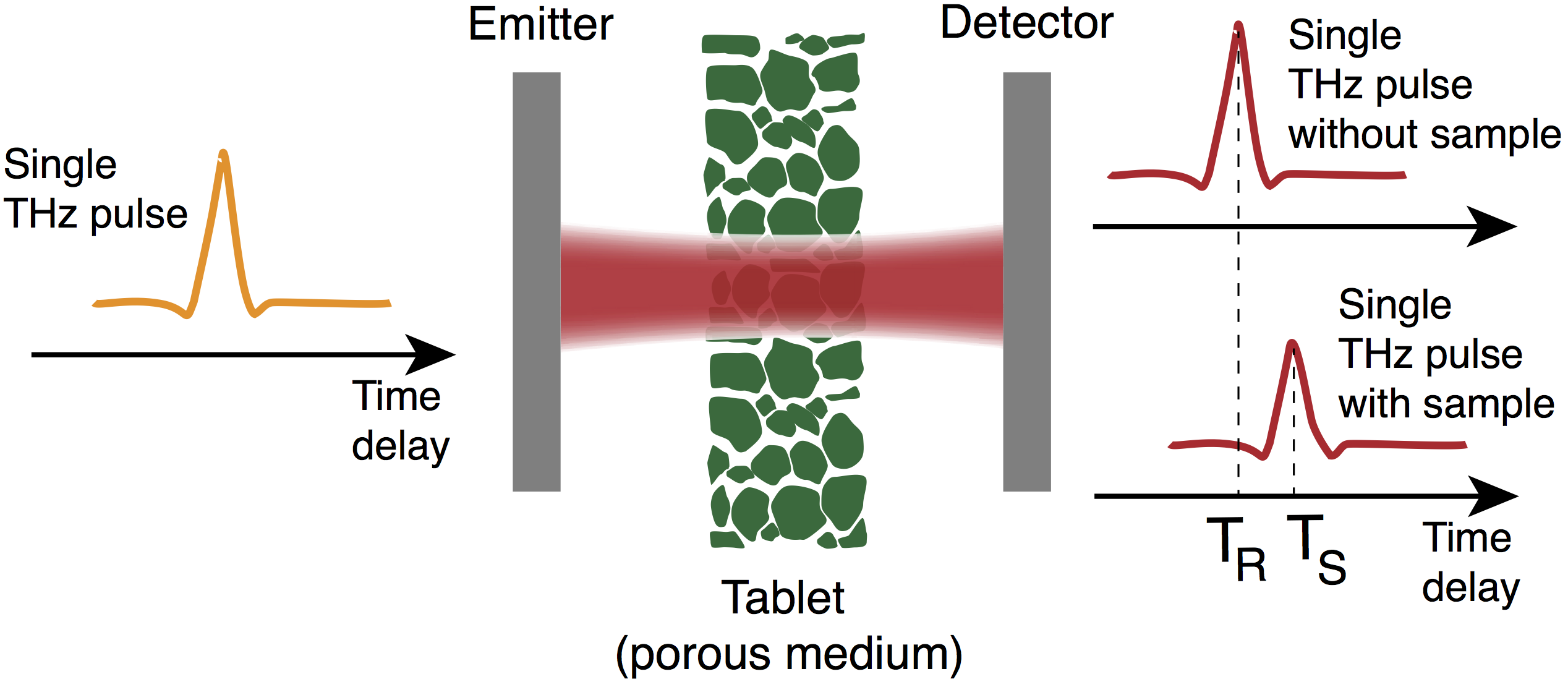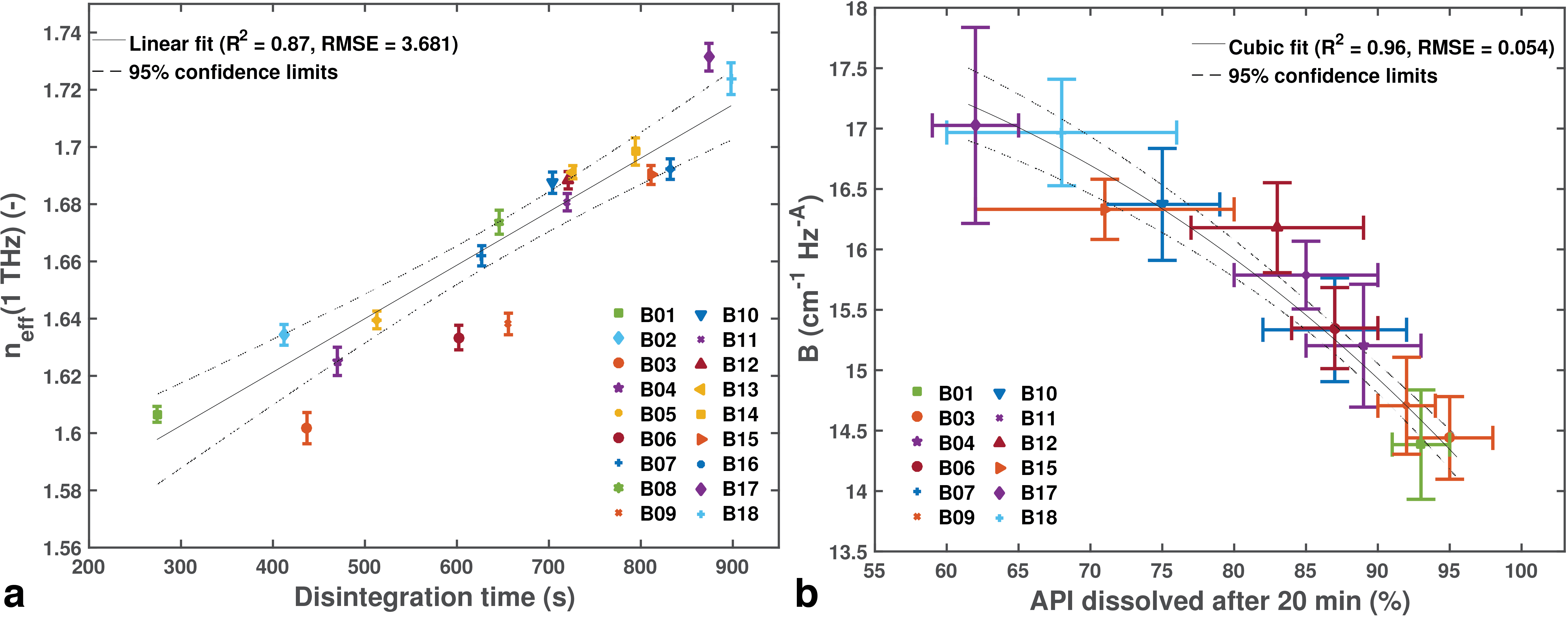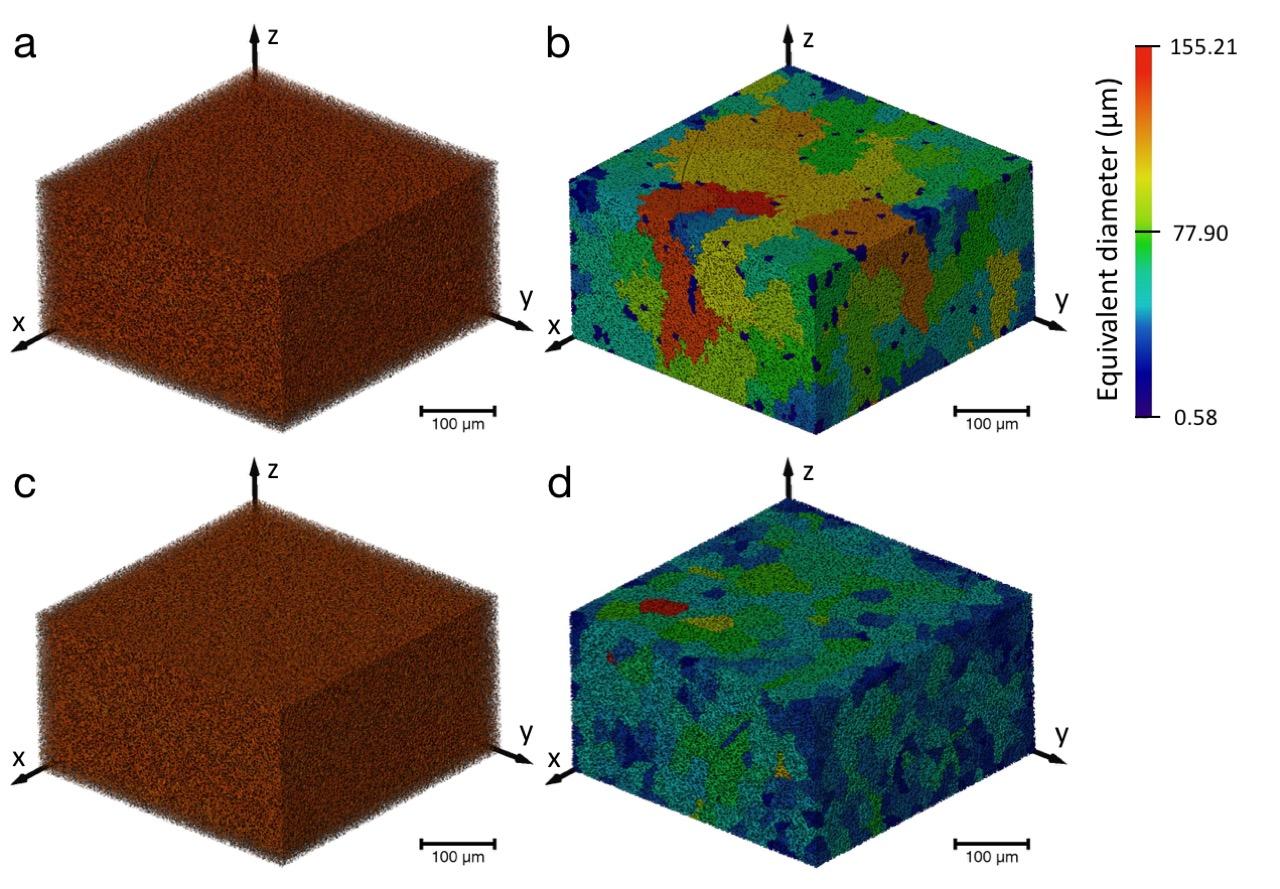Terahertz Time-Domain Spectroscopy
The rate of penetration of the dissolution solvent and the initial release of the active pharmaceutical ingredient (API) is governed by microstructural factors such as the porosity of the tablet. Instead of porosity, the tablet hardness, weight, and dimension measurements are typically used as manufacturing quality attributes in the pharmaceutical industry to predict the performance of the drug delivery system. However, measuring the tablet porosity may be a much better critical quality attribute compared to the labour-intensive and destructive weight, thickness, and hardness tests following tablet compaction. We have shown in several studies the interplay between porous media consisting of excipients/APIs and optical properties measured by terahertz transmission technology.

The figure schematically depicts the measurement principle for determining the porosity of a pharmaceutical tablet. This setup enables the calculation of the effective refractive index from the time-delay difference (TS - TR), which is further used in conjunction with effective medium approximations to quantify the effect of pores in a matrix. The high penetration power of terahertz radiation and the short measurement time (milliseconds) renders this technology a potential process analytical technology (PAT) method for non-destructively measuring bulk porosity of tablets.
Measuring Tablet Porosity
Predicting Disintegration and Dissolution Performance
We demonstrated, for the first time, how the terahertz measurements can be used to predict the disintegration and dissolution performance of tablets. We analysed 18 different batched from a production-scale design of experiments (DoE) study. The granulated tablets consisted of one API and 4 different excipients.
The disintegration time (R2 = 0.86, Figure a below) and API dissolved after 15 min (R2 = 0.96) linearly correlate with the effective refractive index, neff, measured at terahertz frequencies. In contrast, no such correlation could be established from conventional hardness measurements. The magnitude of neff represents the optical density of the sample and thus it reflects both changes in tablet porosity as well as granule density. For the absorption coefficient, αeff, we observed a better correlation with dissolution after 20 min (R2 = 0.96, Figure b below) and a weaker correlation with disintegration (R2 = 0.83) compared to neff. The parameter B is a 'domain size'-descriptor of the disintegrated particles and it was calculated from αeff.
X-ray Computed Microtomography
Powder Compacts

